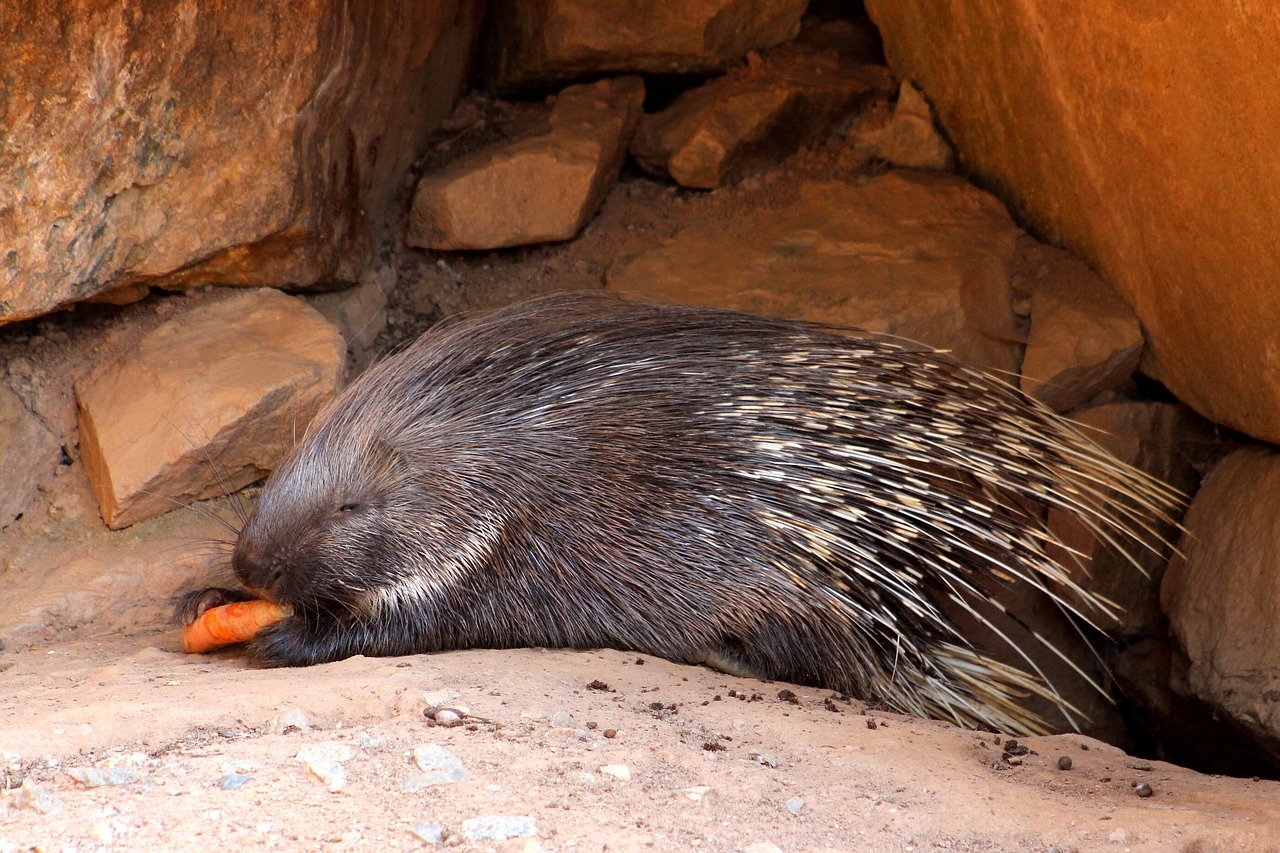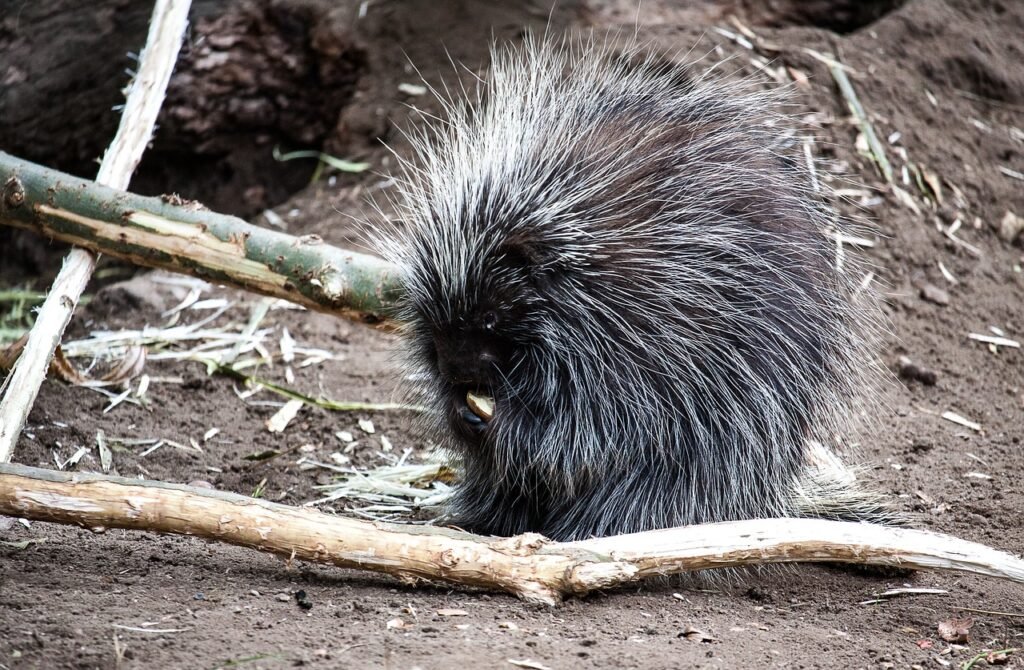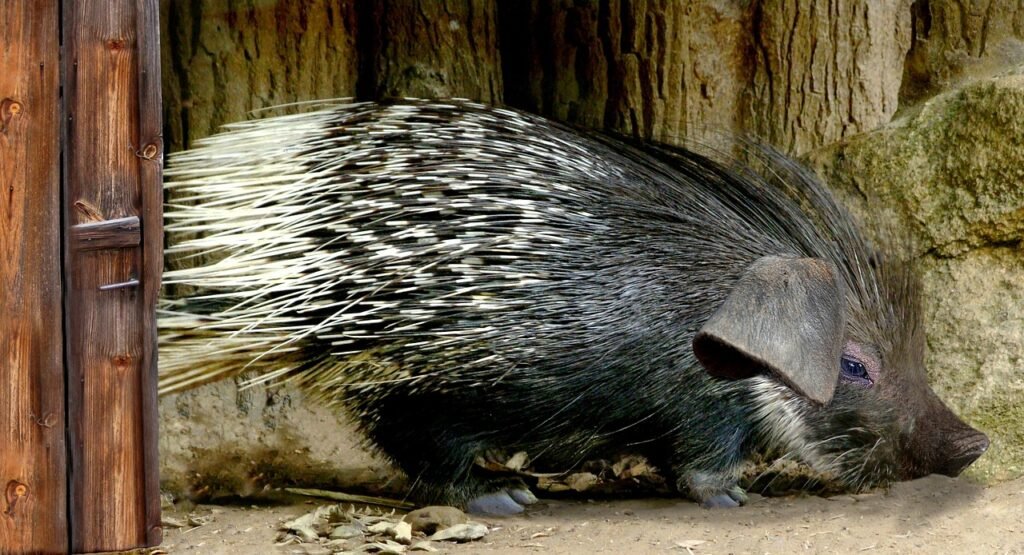Creating a porcupine paradise within captive environments involves bringing the essence of nature into their living space. In this guide, we’ll explore strategies to mimic the natural world, providing your quilled companion with a habitat that fosters well-being, engagement, and a sense of fulfillment.
1. Mimic Native Habitats:
Research the native habitats of porcupines and mimic those environments within the captive space. Incorporate natural elements such as rocks, branches, and logs to create a landscape reminiscent of their wild surroundings.
2. Native Flora Integration:
If possible, introduce safe and non-toxic plants native to porcupine habitats. This not only adds visual appeal but also provides a more authentic and enriching environment. Ensure the chosen plants align with your porcupine’s dietary requirements.
3. Natural Substrates for Digging:
Provide substrates like soil or wood shavings to mimic the natural ground for digging. Porcupines enjoy burrowing, and these substrates allow them to engage in this instinctual behavior, contributing to their mental well-being.
4. Dynamic Climbing Structures:
Enhance the environment with dynamic climbing structures that replicate the variety of surfaces found in nature. Incorporate platforms, branches, and uneven terrain to encourage climbing, exploration, and physical activity.
5. Weather Elements Simulation:
Introduce elements that simulate weather experiences. Create areas with misters for a gentle rain effect, or incorporate shaded spots to mimic natural shading. This provides a multisensory experience and adds complexity to the environment.
6. Seasonal Changes:
Implement seasonal changes within the enclosure. Adjust the layout, introduce seasonal plants or decorations, and vary the enrichment activities to mimic the natural fluctuations experienced in the wild.
7. Natural Lighting:
Whenever possible, provide natural lighting or replicate natural light cycles. Exposure to natural light helps regulate circadian rhythms and contributes to the overall well-being of your porcupine.
8. Sounds of Nature:
Incorporate sounds of nature, such as birdsong or rustling leaves. This auditory enrichment adds depth to the environment and creates a more immersive experience for your porcupine.
9. Boulders and Hiding Spots:
Integrate large boulders or structures that mimic natural hiding spots. Porcupines appreciate having secure areas where they can retreat and feel protected, replicating their behavior in the wild.
10. Interactive Water Features:
If space allows, introduce interactive water features such as shallow ponds or streams. Porcupines may enjoy exploring and interacting with water, providing a unique and enriching experience.
11. Sensory Exploration Stations:
Create stations with different textures, scents, and materials to encourage sensory exploration. This adds variety to their environment and engages their senses in a way that mirrors the diversity of nature.
12. Collaborate with Wildlife Experts:
Consult with wildlife experts or zoo professionals experienced in creating naturalistic environments for captive animals. Their expertise can provide valuable insights and guidance on creating an authentic porcupine paradise.
By integrating nature into captive environments, you’re not only enhancing the well-being of your porcupine but also creating a paradise that fosters their natural behaviors. Regularly observe their interactions with the environment and make adjustments based on their preferences. A well-crafted porcupine paradise ensures a content, stimulated, and thriving quilled companion.



